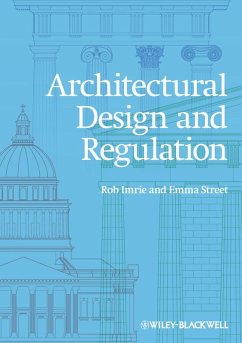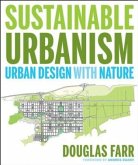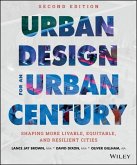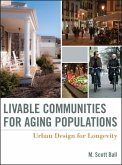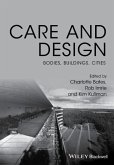Governments are placing increasing emphasis on design codes, building regulations, and planning statements to guide the conduct of architects, and to fashion much more of the design process but there has been little research on what architects feel and think about this, and how it is affecting what they do and their daily patterns of work.
From the earliest periods of architecture and building, architects' actions have been conditioned by rules, regulations, standards, and governance practices. These range from socio-cultural and religious codes seeking to influence the formal structure of settlement patterns, to prescriptive building regulations specifying detailed elements of design in relation to the safety of building structures. In Architectural Design and Regulation the authors argue that the rule and regulatory basis of architecture is part of a broader field of socio-institutional and political interventions in the design and development process that serve to delimit, and define, the scope of the activities of architects.
The book explores how the practices of architects are embedded in complex systems of rules and regulations. The authors develop the understanding that the rules and regulations of building form and performance ought not to be counterpoised as external to creative processes and practices, but as integral to the creation of well-designed places. The contribution of Architectural Design and Regulation is to show that far from the rule and regulatory basis of architecture undermining the capacities of architects to design, they are the basis for new and challenging activities that open up possibilities for reinventing the actions of architects.
Hinweis: Dieser Artikel kann nur an eine deutsche Lieferadresse ausgeliefert werden.
From the earliest periods of architecture and building, architects' actions have been conditioned by rules, regulations, standards, and governance practices. These range from socio-cultural and religious codes seeking to influence the formal structure of settlement patterns, to prescriptive building regulations specifying detailed elements of design in relation to the safety of building structures. In Architectural Design and Regulation the authors argue that the rule and regulatory basis of architecture is part of a broader field of socio-institutional and political interventions in the design and development process that serve to delimit, and define, the scope of the activities of architects.
The book explores how the practices of architects are embedded in complex systems of rules and regulations. The authors develop the understanding that the rules and regulations of building form and performance ought not to be counterpoised as external to creative processes and practices, but as integral to the creation of well-designed places. The contribution of Architectural Design and Regulation is to show that far from the rule and regulatory basis of architecture undermining the capacities of architects to design, they are the basis for new and challenging activities that open up possibilities for reinventing the actions of architects.
Hinweis: Dieser Artikel kann nur an eine deutsche Lieferadresse ausgeliefert werden.
"Our discipline has [in this book] received a gift from outside the tacit values embodied in what we architects refer to as 'studio culture'. We can, of course, dismiss the critique and ignore the opportunity presented by the authors if we so choose. But if the entrenched architects of my generation do, I am confident that the next generation of city-makers will not because, like Imrie and Street, they already glimpse the creative potential of interdisciplinary invention." -- Steven A. Moore, Bartlett Cocke Regents Professor of Architecture and Planning, School of Architecture, The University of Texas at Austin
"It often takes outsiders to point out what insiders have missed or chosen to ignore about themselves. Such revelations are exactly what geographers Imrie and Street bring to the discipline of architecture. The book is an assiduously researched documentation of the way the architects have responded to the increasing regulatory frameworks with a mixture of denial, boredom, resignation and fury - when in fact, the authors show, the way forward is to work with rather than against the frameworks in a manner that is at the same time creative and realist." -- Professor Jeremy Till, Dean of the School of Architecture and the Built Environment, University of Westminster
"Imrie and Street have produced a vital text that opens up a new perspective on architectural practice and regulation as a co-evolutionary process of code-making that is reshaping the cities we inhabit. By highlighting the complex social organisation of these processes, the book opens up a new window on the materiality of design creativity and the politics enacted through regulatory interventions." -- Professor Simon Guy, Director of Manchester Architecture Research Centre (MARC), Head of School of Environment and Development, The University of Manchester
"Architectural Design and Regulation is an insightful tour de force. It provides a much needed critical examination of the exiting regulatory paradigm while bringing together theory, practice and a vision for change. The implications of regulations on urban development are little appreciated and rarely discussed. Yet, across the globe, communities are shaped by codes and regulations that virtually dictate all aspects of urban development. Regulations define how places can and can't be developed, and how controls shape the physical space and buildings where we live and work. By critically assessing the impacts of design regulations on the spatial and social quality of our built environment Rob Imrie and Emma Street offer a unique analysis and practical suggestions. It is a must-read for anyone who is serious about understanding current urban development and architecture practice." -- Eran Ben-Joseph, Associate Professor of Landscape Architecture and Planning, and Head of City Design and Development Group, Department of Urban Studies and Planning, Massachusetts Institute of Technology
"It often takes outsiders to point out what insiders have missed or chosen to ignore about themselves. Such revelations are exactly what geographers Imrie and Street bring to the discipline of architecture. The book is an assiduously researched documentation of the way the architects have responded to the increasing regulatory frameworks with a mixture of denial, boredom, resignation and fury - when in fact, the authors show, the way forward is to work with rather than against the frameworks in a manner that is at the same time creative and realist." -- Professor Jeremy Till, Dean of the School of Architecture and the Built Environment, University of Westminster
"Imrie and Street have produced a vital text that opens up a new perspective on architectural practice and regulation as a co-evolutionary process of code-making that is reshaping the cities we inhabit. By highlighting the complex social organisation of these processes, the book opens up a new window on the materiality of design creativity and the politics enacted through regulatory interventions." -- Professor Simon Guy, Director of Manchester Architecture Research Centre (MARC), Head of School of Environment and Development, The University of Manchester
"Architectural Design and Regulation is an insightful tour de force. It provides a much needed critical examination of the exiting regulatory paradigm while bringing together theory, practice and a vision for change. The implications of regulations on urban development are little appreciated and rarely discussed. Yet, across the globe, communities are shaped by codes and regulations that virtually dictate all aspects of urban development. Regulations define how places can and can't be developed, and how controls shape the physical space and buildings where we live and work. By critically assessing the impacts of design regulations on the spatial and social quality of our built environment Rob Imrie and Emma Street offer a unique analysis and practical suggestions. It is a must-read for anyone who is serious about understanding current urban development and architecture practice." -- Eran Ben-Joseph, Associate Professor of Landscape Architecture and Planning, and Head of City Design and Development Group, Department of Urban Studies and Planning, Massachusetts Institute of Technology
"These are minor points about an excellent and ground-breaking book, which will be essential reading for those researching architectural practice, regulation, design professions and planning, and also for those with an interest in discourses of creativity and cultural production. Architectural design and regulation contributes much to our understanding of the practices and situated knowledges of architects vis-à-vis regulation and so in turn about the ways in which the urban fabric is shaped." (Area, 15 August 2013)

